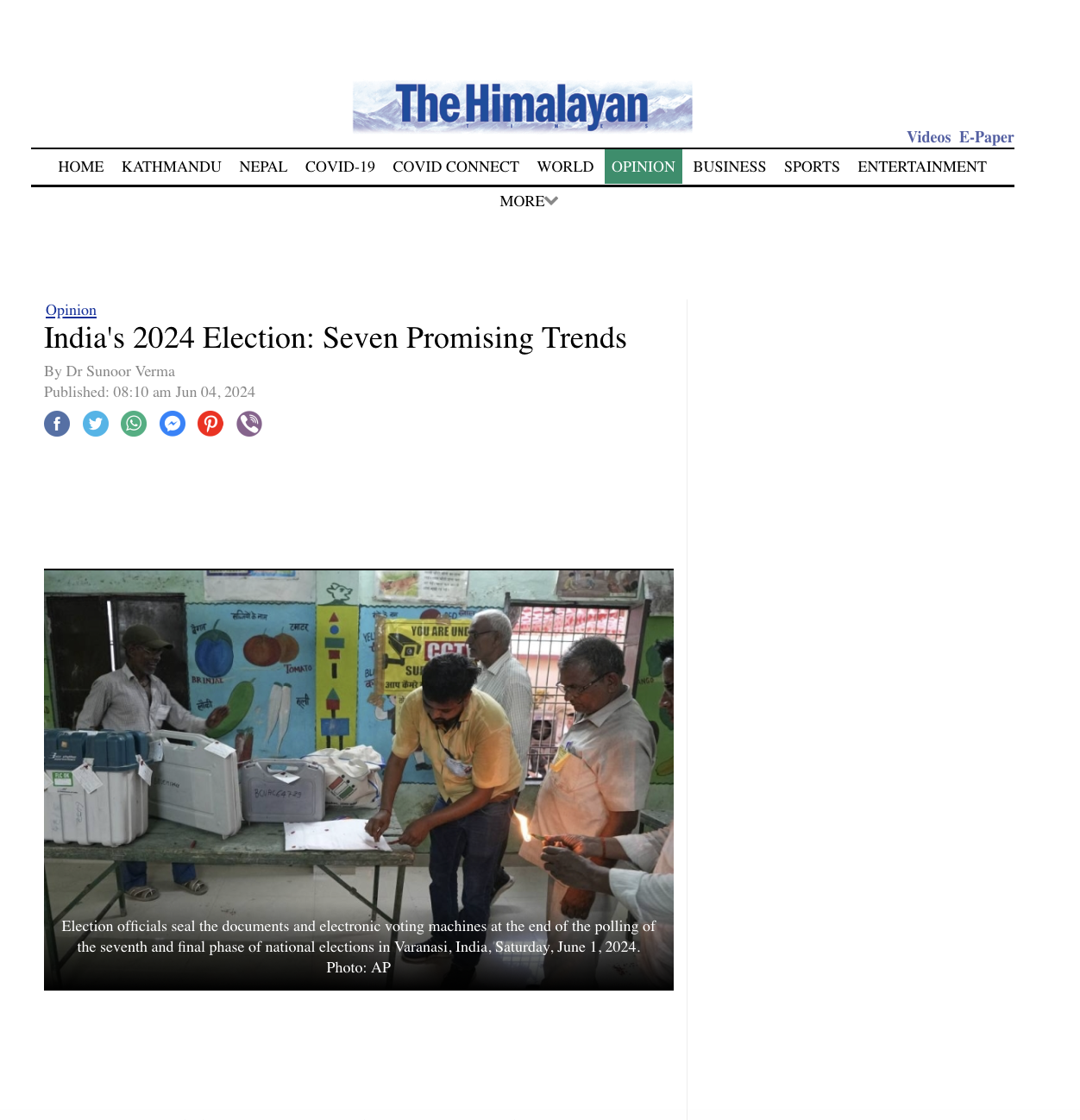India’s 2024 Election: Seven Promising Trends
The Indian general elections of 2024, as always, are a spectacle of democracy on an epic scale. Here are seven remarkable trends that give me much hope as a citizen:
One, India experienced good voter turnout over the summer months, with a considerable rise in participation from young people and first-time voters. This demonstrates a dynamic and engaged electorate eager to shape the country’s destiny. Young voters’ passion, in particular, indicates strong democratic involvement and a generational shift in political understanding and activism. The correlation between high temperatures and voter turnout is being studied and will hopefully guide future election scheduling.
Two, the 2024 Indian elections were a technological miracle, demonstrating how cutting-edge innovations can strengthen the democratic process and make it more transparent, secure, and efficient. Blockchain technology was used for voter registration for the first time, making it safe and tamper-proof. This enables voters to check their registration status using a blockchain-based app, preventing voting fraud. AI was also essential for election monitoring. AI algorithms analysed social media in real-time to flag disinformation and hate speech, ensuring a fair and peaceful election. AI-powered facial recognition confirmed voter identities at polling stations, speeding up and decreasing impersonation. Each polling location used electronic voting devices with voter-verifiable paper audit trails. This combination allows voters to validate their vote using a paper slip, improving electronic voting transparency and trust.
Third, these elections marked a significant step towards inclusivity, with a notable increase in women and candidates from marginalized communities contesting seats. According to the Election Commission of India, the number of women candidates rose 10% compared to the previous election. Moreover, candidates from Scheduled Castes, Scheduled Tribes, and other marginalized communities made significant inroads, highlighting a shift towards a more inclusive political landscape that better reflects India’s diverse demographic composition.
Fourth, the 2024 elections marked a groundbreaking shift towards environmental consciousness, making them the greenest in the nation’s history. The effort to reduce the environmental impact was evident across various facets of the electoral process. Political parties embraced digital platforms, significantly cutting down on paper use. Social media, mobile apps, and SMS campaigns replaced traditional posters, pamphlets, and flyers, drastically reducing the carbon footprint. When physical materials were necessary, eco-friendly alternatives took centre stage. Biodegradable banners, recyclable pamphlets, and natural dye inks became the norm. Several parties distributed seed paper pamphlets that voters could plant, symbolizing growth and sustainability.
Solar panels and other renewable energy sources powered polling stations, especially in remote areas. This ensured reliable power and underscored a commitment to sustainable practices. Campaign travel and logistics significantly shifted towards electric vehicles (EVs). Political leaders and campaign teams used EVs to minimize carbon emissions. Public transport incentives further supported this move, including discounted fares on election day for voters using electric taxis and buses.
Five, these elections made remarkable strides in ensuring every eligible voter could exercise their right to vote, regardless of physical ability or location. With about 2.21% of the population living with disabilities and many more facing mobility challenges, these efforts were crucial. The Election Commission of India took comprehensive measures to facilitate voting for people with disabilities, senior citizens, and those in remote areas. Mobile polling stations reached distant locations, and accessible voting equipment, like braille-enabled EVMs and ramps, became more common. India’s rapidly improving infrastructure played a key role. Better all-weather roads, enhanced public transportation networks, and wheelchair-accessible taxis made reaching polling stations easier for voters with mobility challenges. All these reflect a commitment to an inclusive democracy and set a new benchmark for accessibility and participation in the electoral process.
Six, despite ongoing tensions and disturbances in some parts, the 2024 Indian elections were largely peaceful, with minimal incidents of violence or disruption. This success is a testament to the dedication and bravery of India’s invisible administrative personnel and security servicemen and women. Their effective planning and coordination with law enforcement agencies ensured the elections could proceed smoothly, even in volatile areas. These unsung heroes worked tirelessly, often behind the scenes, to maintain peace and order, allowing voters to exercise their democratic rights safely. Ensuring that these services remain non-political, are incentivised appropriately and recognised is critical for the country’s democracy.
Seven, the 2024 elections in India showcased the remarkable impact of having a stable majority government, leading to enhanced efficiency and effectiveness across various sectors. This was evident in how all ministries utilized their platforms, communication channels, and capabilities to the fullest to encourage voter participation, turning the elections into a grand celebration of democracy. In contrast, in India’s experience and neighbourhood, coalition governments often result in two steps forward and two steps back, if not three, due to their inherent instability and conflicting interests. The synergy between the government and corporate sector in driving voter education campaigns in 2024 also exemplifies how a stable government can enhance national initiatives, contributing to the vibrancy of India’s democracy.
Highlighting the positive aspects of India’s 2024 elections, the essence of “Sarvam Parartha Samgraha” rings true—’gather all learning for the greater good’. Despite the high transaction cost, especially for a diverse subcontinent-sized nation, India consistently bets on democracy in its long-term strategy. With innovation and a steadfast commitment to democratic values, the lessons from the 2024 elections can strengthen democracy in India and Bharat for generations to come.
Published on 04 June 2024 in print of The Himalayan Times
Dr Sunoor Verma is the President of The Himalayan Dialogues and an international leadership communication expert. More on www.sunoor.net
Tags
#Elections #India #Leadership #Innovation #Gender #Women #Technology #Enviornment #Election2024
